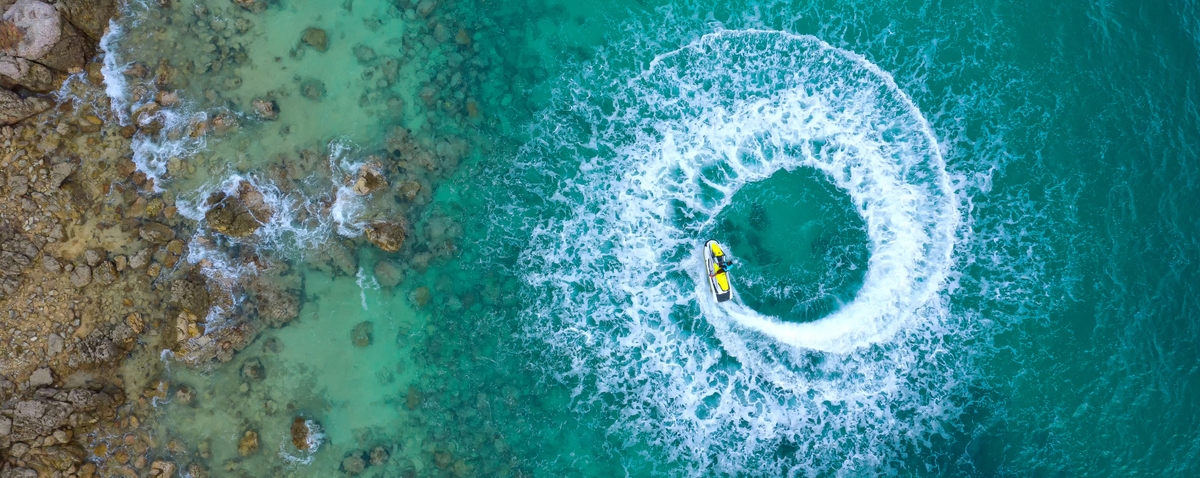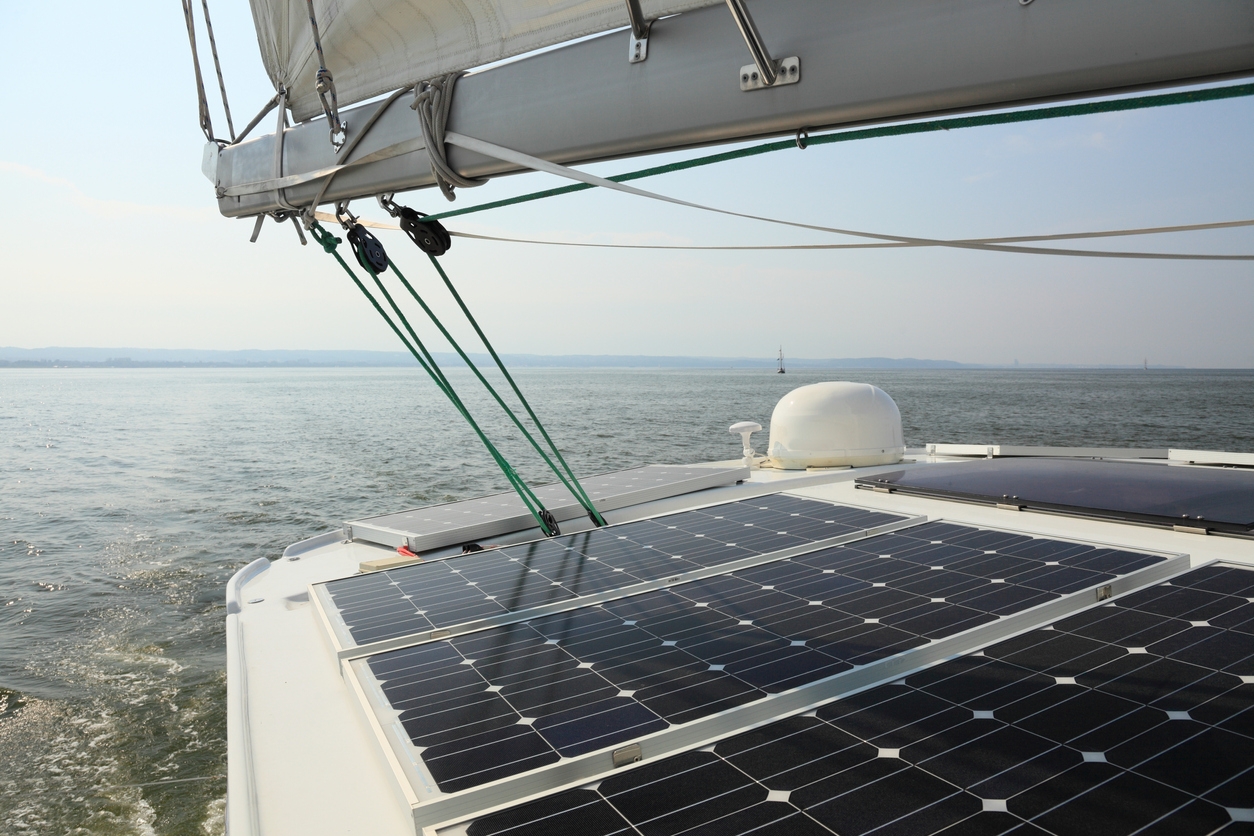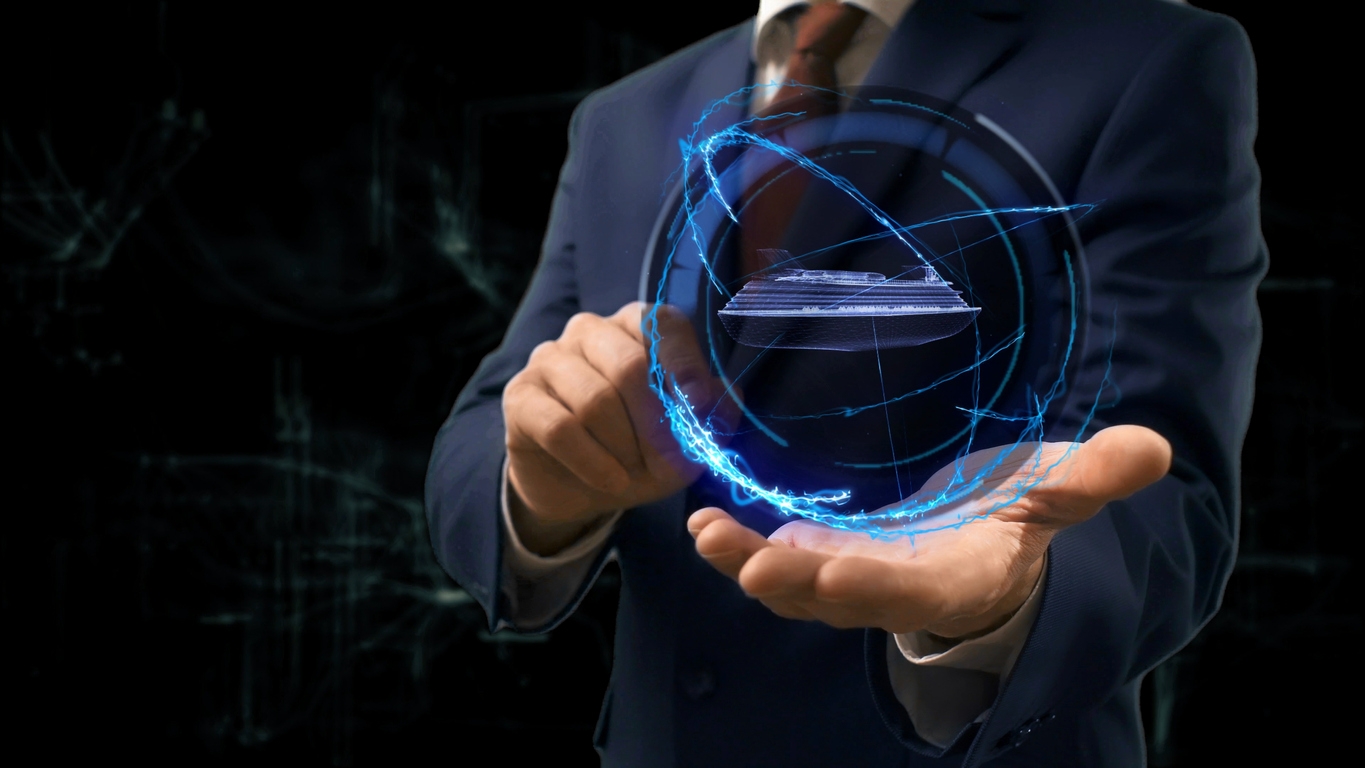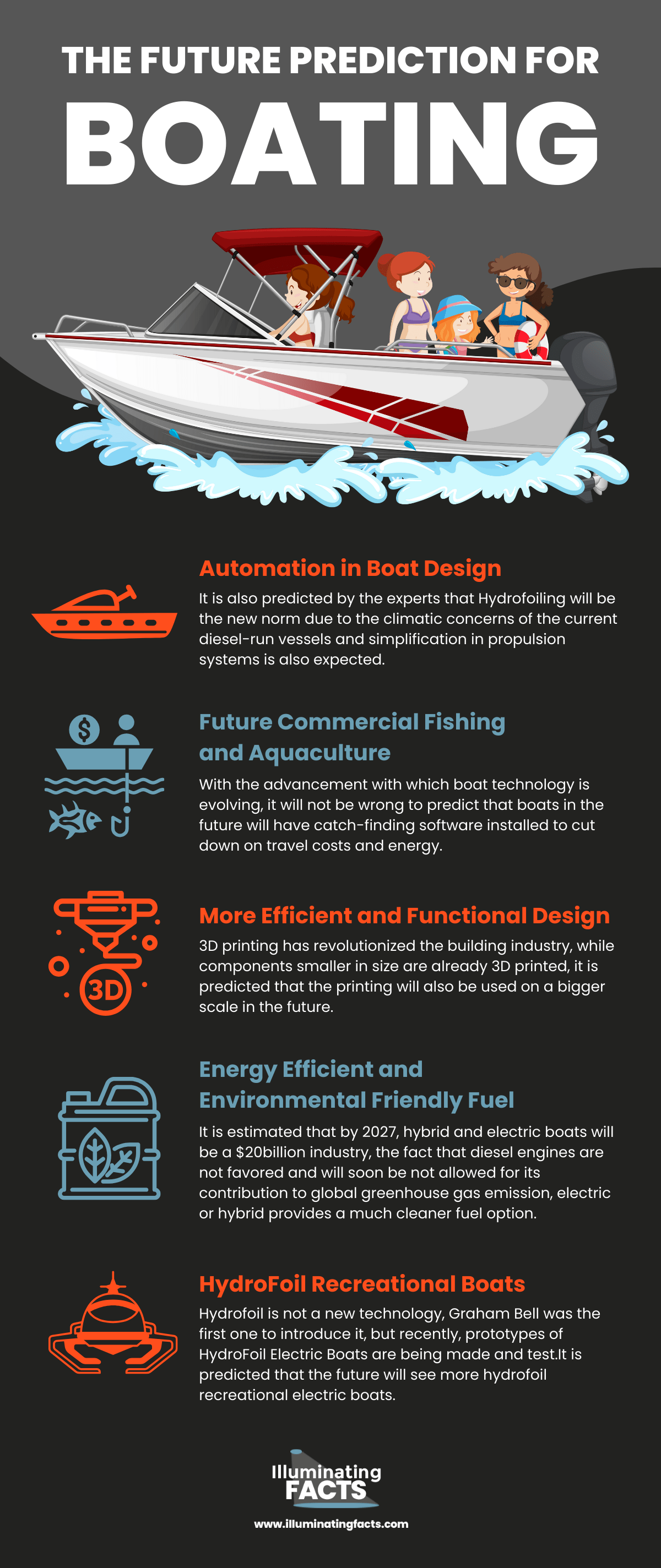The quest to find hidden treasures in the depth of the sea and lands have always intrigued humans. They would move mountains and dive deeper into the seas to search for everything the world offers. This nature of continuous exploration has led to many innovations that made the process of exploration easier or allowed one to go beyond what seems possible. Innovation in watercraft is the result of such an unending quest to research the floors of the oceans or to have an ample catch for monetary gain. What started as a simple boat craft to catch food for the family has expanded into an innovative watercraft industry worth $42.30 billion. [1]
The Invention of the Boat
While it has yet to be discovered who created the first boat, the boat is not a recent transportation medium. It is believed that Egyptians were the first ones to build boats as one could find the paintings/carvings of boats on the graves and the flower vases in Egyptian ruins. [2] Made with the reeds of papyrus as it was the common reed during Egyptian times, the boat painted seemed very narrow and elongated. As the civilization was very active in foreign trade, the Mediterranean Sea was their sea route to import or export goods. It is believed that the first boat was estimated to be more than 6000 years old.
The earliest technology in water transportation is through boats but with time watercraft is not solely focused on on-water technology but water transportation now extends to in and underwater innovation as well.
The Watercraft Technology
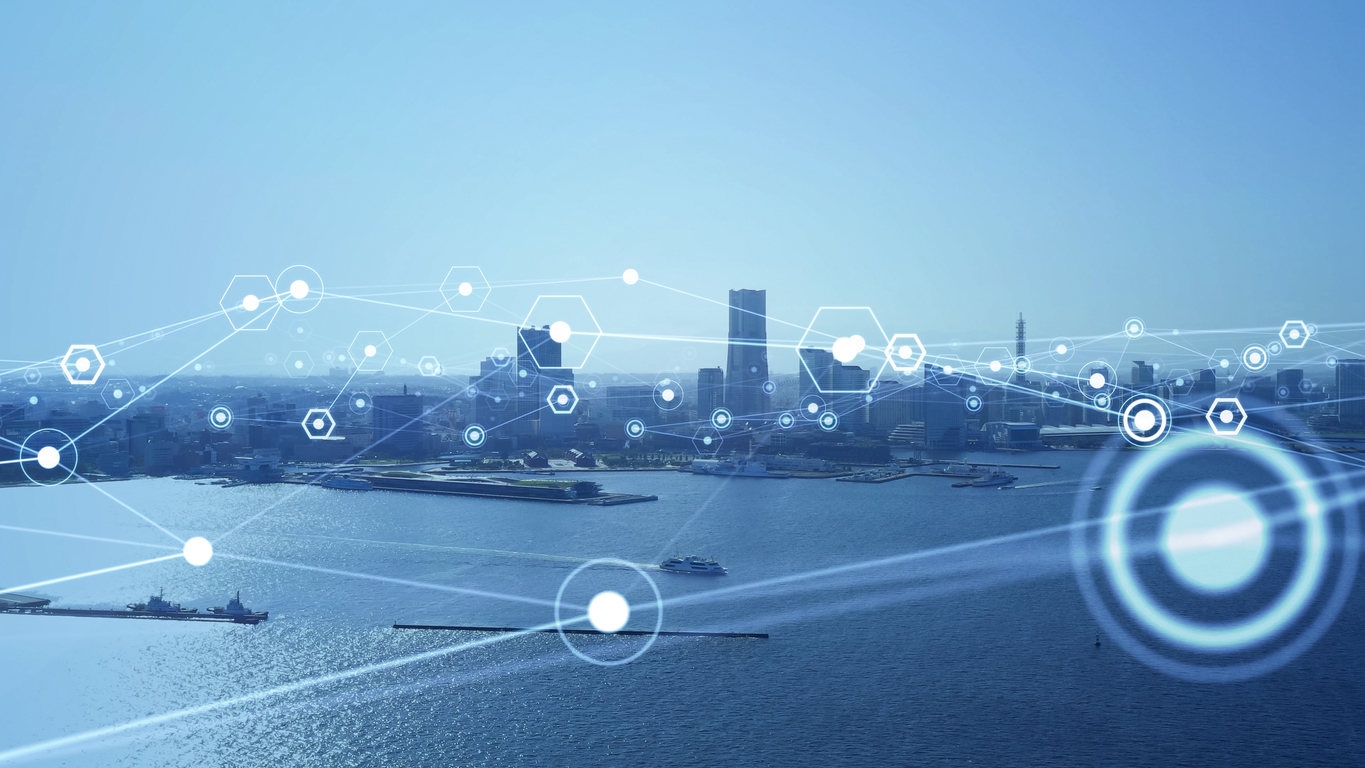
Initially, boats were built for fishing, but with advancements in technology, not only have fishing boats seen advancement but the watercraft have expanded beyond the purpose of fishing. From small wooden canoes to electric boats and submarines, water transportation has come a long way. [3] Read on to learn about the innovation in watercraft and how it has changed the game for water transportation, sea research, ocean exploration, and fishing for private and commercial purposes.
Electric Propulsion
In order to minimize emissions, many commercial boats and ships are designed with an integrated Electric propulsion system that makes use of electricity for rotating propeller blades. The technology is becoming common in Europe and Japan in most of commercial as well as private water vessels. The Electric Propulsion integrated vessels that are gaining popularity are H2E by Four Wins, Falcon E8 by Falcon and a Modular E-Drive System by Hercules Electric Marine that can be integrated with many kinds of boats.
Hybrid Propulsion
Not dependent solely on the electric system, the hybrid uses combustion engines but is powered by batteries, thus combining both forms of energy but causing less pollution through emission. These propulsion systems are highly efficient and allow flexible power demand, from fishing boats to RoPax, hybrid propulsion can work for every kind of watercraft.
Watercraft Material Exploration
Though steel and wood have been used for centuries as ship or boat building materials, the idea is to minimize the carbon footprint of the marine industry as well by producing durable materials that can be used for longer durations. Steel can corrode and deplete with time and discarding the old boats and ships also adds to pollution. Transportation through ships or carbon emission in manufacturing the ship causes 940 million tonnes of carbon dioxide annually. [4]
Light Yet Durable Materials
To dampen the hazardous impact of boats on the environment materials such as carbon fiber, Kevlar, fiberglass and fiber-reinforced plastics are gaining popularity. Not only are these materials durable, last longer, and perform better but they are all lighter than steel which is the commercially used material for the watercraft industry. [5]
Furthermore, now thermoplastic, composite wood, anodized aluminum, recycled polyester, and sustainably sourced certified wood are also being used in boat/ship manufacturing. These materials give more flexibility, are light so energy efficient as well, do not get easily corroded, and are low maintenance.
Autonomous Water Vessels
From the Mayflower Autonomous Ship that arrived safely at Nova Scotia to the Prism Courage, a tanker that traveled from Texas to South Korea with the help of the software Avikus, automated water traveling is not a dream anymore. While ships like Mayflower managed to reach its destination with the help of A. I navigation, some robotic boats require some form of assistance to navigate easily. In the future reliance solely on technology might be possible but currently self-maneuvering boats require human supervision, though minimal, to avoid any drastic hazard. [6]
Integration of Renewable Energy
The world is becoming more aware of Anthropocene activities and how it has damaging effects on the environment. Boating is considered fun as more people find it adventurous, the fact that Americans love their boats so much that each year around 100 million go boating speaks volumes about the craze people have with boating.
But environmental degradation is real. Therefore, it is always recommended to mend ways by opting for more humane and environmentally conscious design solutions. Here are a few options for green boaters who want to make the most of their love for boating but are not willing to damage the environment in the process.
Solar Powered Boat Design
The environmentally ethical design has become a priority in every industry. Boats and yachts too now use renewable sources of energy. With solar energy being in abundance, even water vessels are run using solar power. Boats can be easily charged with sun energy. Unlike conventional boats, now boats can work as mobile power stations as well and can even feed the energy to provide electricity where the grid system is not installed. [7]
Hydro Fuel Cell Energy
If you have not already, Hydro Fuel Cell is another technology to explore for the boat. Instead of fossilized fuel, hydrogen as a fuel is a much cleaner alternative as once combusting, it gives off water, and heat apart from electricity, as the by-product. [8]
Electric Propulsion
Using Electric Propulsion instead of the usual gasoline-powered vessel can make a huge impact on the environment. Firstly, it does not make too much noise and secondly, it can be used even in narrow spaces like river streams as controlling them is easier than the gasoline ones.
Advanced Hull Design
Hull is one of the most important parts of the ship design. A functional and efficient hull design ensures the safety of machinery, people, and cargo from all kinds of weather conditions be it flooding, water storm, or strong winds. It keeps the structural integrity intact for safer travel. The design of the hull can significantly impact its efficiency. Now X-Bow hulls which are different from the conventional hull design, in that they usually lean backward instead of facing forward as is the norm. This backward-leaning hull ensures lesser noise and limited vibration and further helps in dampening the impact of the waves. X-Stern is the aft design based on the same design principles as that of X-bow. [9]
This change from the conventional design has allowed the vessels to move faster and save on fuel as well, thus an environmentally conscious design for watercraft hulls.
Navigation and Communication System
The evolution of technology paved the way for better water transportation systems, making trade and leisure activities more convenient for the countries. Now with AI inclusion in every aspect of human lives, watercraft too is making the most of Artificial intelligence to make their systems more smart and user-friendly. Below are some creative and smart technologies that changed the game in the watercraft navigation system.
A.I for Better Navigation
Technology has made it possible to avoid damage as much as possible, which is why a system whereby A.I. system is included in the water vessels, makes traveling via water efficient and safe. [10] The system aids in providing the most accurate details of the conditions pertaining to weather, sea level, wind, and predicted climatic scenarios. The captain becomes more informed beforehand, allowing it to tackle the situation with less chance of harm to human life or the water vehicle.
Augmented Reality For Assisting in Navigation
Gone are days when one needed to experience something in real to feel the thrill, now AR technology briefs one beforehand as to what to expect and what one will experience while their time in or underwater. [11] AR can inform about the sea creatures that can be observed, the depth of the ocean/sea(without actually going deep), and the objects that are under the sea with their exact location as well.
Electric Vessel and Charging
The whole vessel can now be charged for more efficiency, better safety, and fewer maintenance requirements. Who knew that even ships can be charged like cars? [12] Now with more vessels being converted to electric-powered ones, charging stations at various stops have become a necessity. Supercharging is made possible because of many companies, one of the most famous one being Aqua Superpower which allows the boater to download the app and pay online when charging
The Future Prediction for Boating
The speed with which the boating industry changes due to technology and innovation is astonishing. As per some experts, the future of boating is all about automation where a touchscreen will allow you to maneuver the vessel and control all the navigation. As the current era is all about wireless technology, switch, and breaker panels will soon be a thing of the past. Though it is a prediction, some are already working on this technology. [13]
Automation in Boat Design
It is also predicted by the experts that Hydrofoiling will be the new norm due to the climatic concerns of the current diesel-run vessels and simplification in propulsion systems is also expected. Self-driving cars are no longer imagined, with boats, self-sailing boats that could anchor, sail and reach their destination without effort on the part of humans, are also expected in the near future. With AIS-type transmitters this self-operating boat system does not sound like a fantasy but something which is possible.
Future Commercial Fishing and Aquaculture
With the advancement with which boat technology is evolving, it will not be wrong to predict that boats in the future will have catch-finding software installed to cut down on travel costs and energy. Furthermore, a 360-degree camera and more advanced AI system of navigation is also expected. [14]
More Efficient and Functional Design
3D printing has revolutionized the building industry, while components smaller in size are already 3D printed, it is predicted that the printing will also be used on a bigger scale in the future. The computational design and parametric design will aid in making a more efficient and functional design for both, recreational as well as commercial vessels.
Energy Efficient and Environmental Friendly Fuel
It is estimated that by 2027, hybrid and electric boats will be a $20billion industry, the fact that diesel engines are not favored and will soon be not allowed for its contribution to global greenhouse gas emission, electric or hybrid provides a much cleaner fuel option. Amsterdam has already decided to end the use of diesel engine maximum by 2025.
HydroFoil Recreational Boats
Hydrofoil is not a new technology, Graham Bell was the first one to introduce it, but recently, prototypes of HydroFoil Electric Boats are being made and test.It is predicted that the future will see more hydrofoil recreational electric boats. One such boat that has recently been tested was C-8 by Candela Technology AB. The electric cruiser travelled silently and used the limited amount of energy to function. [15]
Conclusion
Boats will remain the most important medium of transportation and the technology in the system is only evident as most of the trade is via sea routes. Interestingly, the UK is considered an island as most of what the country buys comes only through the sea route. With more than 70 percent of the earth’s surface being water, trade and travel through the sea is no surprise. Boating is one of those recreational activities that can be enjoyed alone as well and with more and more people becoming interested in it, innovation in it is certain.
References:
[1] Global leisure boat market size report, 2022 – 2030. (n.d.). Market Research Reports & Consulting | Grand View Research, Inc. https://www.grandviewresearch.com/industry-analysis/global-leisure-boat-market
[2]Shipbuilding: The earliest vessels. (n.d.). Royal Museums Greenwich. https://www.rmg.co.uk/stories/topics/shipbuilding-earliest-vessels
[3]17th-century developments. (1998, September 8). Encyclopedia Britannica. https://www.britannica.com/technology/ship/17th-century-developments
[4] New materials to make ships more sustainable and less noisy for marine life. (n.d.). Horizon Magazine. https://ec.europa.eu/research-and-innovation/en/horizon-magazine/new-materials-make-ships-more-sustainable-and-less-noisy-marine-life
[5] The revolution of materials in boating: The innovation transforming the industry. (n.d.). LinkedIn. https://www.linkedin.com/pulse/revolution-materials-boating-innovation-transforming-industry/
[6] Heilweil, R. (2022, July 20). The unsinkable potential of autonomous boats. Vox. https://www.vox.com/recode/23270179/sea-machines-mayflower-self-driving-boats-autonomous-ai
[7] Solar Impulse. (n.d.). Solar electric boats. Solar Impulse Foundation: Clean and profitable solutions for the environment. https://solarimpulse.com/solutions-explorer-fr/solar-electric-boats
[8] Mandra, J. O. (2023, April 6). China’s first hydrogen fuel cell-powered boat hits the water. Offshore Energy. https://www.offshore-energy.biz/chinas-first-hydrogen-fuel-cell-powered-boat-hits-the-water/
[9] Ulstein’s innovative hull design for more fuel-efficient vessels. (n.d.). Business Norway. https://businessnorway.com/solutions/Ulstein-innovative-hull-design-for-more-fuel-efficient-vessels
[10] The AI boating revolution: How technology is transforming the waterways! (n.d.). LinkedIn. https://www.linkedin.com/pulse/ai-boating-revolution-how-technology-transforming-waterways/
[11] Hydra0. (2023, May 6). Augmented reality for sailors. Cruising World. https://www.cruisingworld.com/augmented-reality-for-sailors/
[12] Charging – Marine vessel charging systems. (n.d.). Wartsila.com. https://www.wartsila.com/marine/products/ship-electrification-solutions/shore-power/charging
[13] The future of boats & boating. (2019). https://www.boatus.com. https://www.boatus.com/expert-advice/expert-advice-archive/2019/april/the-future-of-boats-and-boating
[14] Taricka, C. (2021, November 16). Past, present and future: Boat design. RTF | Rethinking The Future. https://www.re-thinkingthefuture.com/product-design/a5892-past-present-and-future-boat-design/
[15] The evolution of recreational BoatingThe future – It’s electric. (2022, December 8). Marina Dock Age. https://www.marinadockage.com/the-evolution-of-recreational-boatingthe-future-its-electric/

